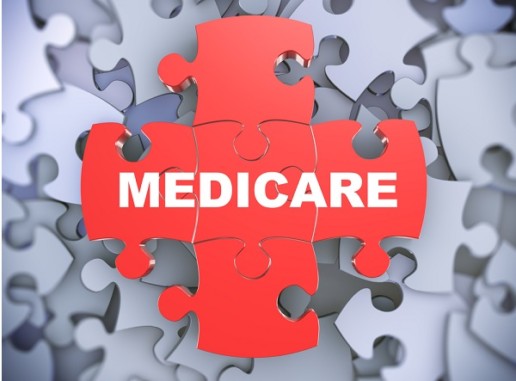The Saxon Advisor - June 2020
Compliance Check
what you need to know
Eligible Automatic Contribution Arrangement (EACA). For failed ADP/ACP tests, corrective distributions must be made towards participants within 6 months after the plan year ends – June 30, 2020.
SF HSCO Expenditures. The last day to submit SF HSCO expenditures, if applicable*, for Q2 is July 30, 2020. *Applicable for employers with 20+ employees doing business in SF and Non-Profits with 50+ employees.
Form 5500 and Form 5558. The deadline for the 2019 plan year’s Form 5500 and Form 5558 is July 31, 2020 (unless otherwise extended by Form 5558 or automatically with an extended corporate income tax return).
Form 8955-SSA. Unless extended by Form 5558, Form 8955-SSA and the terminated vested participant statements for the plan year of 2019 are due July 31, 2020.
Form 5558. Unless there is an automatic extension due to corporate income tax returns, a single Form 5558 and 8955-SSA is due by 2½ months for the 2019 plan year.
Form 5330. For failed ADP/ACP tests regarding excise tax, Form 5330 must be filed by July 31, 2020.
401(k) Plans. For ADP/ACP testing, the recommended Interim is due August 1, 2020.
In this Issue
- Upcoming Compliance Deadlines:
- Eligible Automatic Contribution Arrangement (EACA)
- The deadline for the 2019 plan year’s Form 5500 and Form 5558 is July 31, 2020.
-
Medicare 101: A Quick Guide For Employers
- Fresh Brew Featuring Abby Graham
- This month’s Saxon U: The Steps Of An Internal Investigation
- #CommunityStrong: Pick your Own Charity! One of our Own, Deborah Raines, made a meal for a family in need at her temple!
The Steps Of An Internal Investigation
Join us for this interactive and educational Saxon U seminar with Pandy Pridemore, The Human Resources USA, LLC, as we discuss the steps of an internal investigation.
Medicare 101: A Quick Guide For Employers
Bringing the knowledge of our in-house advisors right to you...
Medicare is a governmentfunded health insurance program for those aged 65 and above, those under 65 with certain disabilities, and those with End State Renal Disease (ESRD) or Amyotrophic Lateral Sclerosis (ALS). Employers that offer group health insurance plans to their employees have an interest in learning how employees’ entitlement to Medicare benefits can affect the administration of those plans.
“Ask a licensed agent for assistance. Advertisements can be confusing, and everyone wants to make the right choice. Using my expertise, I take the fear out of the decision making, so my clients can make an informed decision concerning their healthcare.”
Fresh Brew Featuring Abby Graham
"It’s not that hard to be well!"
This month’s Fresh Brew features Abby Graham, Wellness Director at Saxon.
Abby’s favorite brew is Coffee. Her favorite local spot to grab her favorite brew is Coffee Emporium.
Scott’s favorite snack to enjoy with his brew is Reese’s Pieces Cookies.
This Month's #CommunityStrong:Each member of Saxon will be choosing their own charity that they want to make a positive impact on!
This May, June & July, the Saxon team and their families will be choosing their own charity that they would like to make a positive impact towards!
Are you prepared for retirement?
Saxon creates strategies that are built around you and your vision for the future. The key is to take the first step of reaching out to a professional and then let us guide you along the path to a confident future.
Monthly compliance alerts, educational articles and events
- courtesy of Saxon Financial Advisors.

Medicare 101: A Quick Guide For Employers
Medicare is a governmentfunded health insurance program for those aged 65 and above, those under 65 with certain disabilities, and those with End State Renal Disease (ESRD) or Amyotrophic Lateral Sclerosis (ALS). Employers that offer group health insurance plans to their employees have an interest in learning how employees’ entitlement to Medicare benefits can affect the administration of those plans. We sat down to speak with Olivia Childs, a Senior Solutions Licensed Agent at Saxon Financial Services, to get some more information on Medicare for beginners.
When asked about the number one thing to keep in mind when trying to figure out your first steps with Medicare, Olivia commented, “Ask a licensed agent for assistance. Advertisements can be confusing, and everyone wants to make the right choice. Using my expertise, I take the fear out of the decision making, so my clients can make an informed decision concerning their healthcare.”

What are the different parts of Medicare?
- Part A is hospital insurance that helps cover inpatient care in a hospital, skilled nursing facility care, inpatient care in a skilled nursing facility (not custodial or long-term care), hospice care, and home health care. Most U.S. citizens qualify for zero premium Medicare Part A upon attainment of age 65.
- Part B is the actual ‘health’ coverage under Medicare. It helps cover physician visits, screenings and other aspects of out-patient medical care. Medicare Part B has a monthly premium to cover outpatient care which increases annually.
- Part C is a Medicare Advantage Plan. This is a plan that offers all of the benefits of Parts A and B, sometimes with Part D, through a private health insurer.
- Part D was established in 2003. Part D of the Medicare Program provides prescription drug coverage to Medicare beneficiaries. This drug coverage may be available in a standalone Prescription Drug Plan (PDP) or integrated with a Medicare Advantage Plan.
What is Original Medicare?
With original Medicare, your coverage is through Parts A and B. Part A includes inpatient and/or hospital coverage, while Part B includes outpatient and/or medical coverage. Through this type of Medicare, you are provided a red, white and blue card to show your providers when receiving treatment. While most doctors take Original Medicare coverage, it is important to check whether your provider participates. If you visit one that does,
then your Medicare card will limit how much you can be charged.
Through Original Medicare, you are responsible for a 20% coinsurance if you see a participating provider and after meeting your deductible. Some basic, key things to know about Original Medicare include that:
- For Medicare Supplement Insurance, you have the choice to pay an additional premium for a Medigap to cover Medicare cost-sharing.
- You do not need referrals to see a specialist.
- For drug coverage, you must sign up for a standalone prescription drug plan.
- It does not cover vision, hearing, or dental services.
What is Medicare Advantage?
Unlike Original Medicare, Medicare Advantage are private plans that contract with the federal government to provide Medicare benefits. These plans are also known as Medicare private health plans or Part C. Some of the most common types of plans are:
- Health maintenance Organizations (HMOs)
- Preferred provider Organizations (PPOs)
- Private Fee-For-Service (PFFS)
If you join a Medicare Advantage Plan, you will not use the red, white, and blue card when you go to the doctor or hospital. Instead, you will use the membership card your plan sends you to get health services covered. Plans must provide the same benefits offered by Original Medicare, but they may apply different rules, costs, and restrictions. They also may offer certain benefits that Medicare does not cover. Just like Original Medicare, there are some key items to be aware of:
- Your cost-sharing varies depending on plan. Usually pay a copayment for in-network care. Plans may charge a monthly premium in addition to Part B premium.
- You cannot enroll in a Medigap plan.
- You can typically only see in-network providers.
- You will also typically need a referral to see a specialist.
- For drug coverage, in most cases, the plan provides prescription drug coverage (you may be required to pay higher premium).
- It may cover additional services, including vision, hearing, and/or dental (additional benefits may increase your premium and/or other out-of-pocket costs).
- You will have an annual out-of-pocket limit. Plan pays the full cost of your care after you reach the limit.
If you sign up for Original Medicare and later decide you would like to try a Medicare Advantage Plan–or vice versa–be aware that there are certain enrollment periods when you are allowed to make changes.
Employer Requirements
Employers are required to file annual Centers for Medicare and Medicaid Reporting and Employee-Notice Distribution letters even if one employee has coverage under Medicare Parts A, B, or C. Usually companies receive letters from their insurance companies asking for a Federal Tax Identification number and the group size of employees each year.
If your company has 19 or fewer full- and part-time employees, Medicare is almost always primary. Here, it is essential that employees turning 65 enroll in Medicare Parts A and B. If they do not, generally they will have to pay anything that Medicare would have covered. If your company is larger, various rules determine whether your group plan is the primary or secondary payer. MSP requirements also apply for Medicare-eligible employees who are disabled or have end-stage renal disease.
Once per year, written notice distribution is required to all Medicare-eligible employees. This must inform the employee whether the employer’s prescription drug coverage is ‘creditable’ or ‘noncreditable.’ Notice can be sent electronically, but it is often easier to distribute in written format. These need to be sent before October 31.
It is a good idea for employers to provide employees with written details about their employer-provided coverage, which will help them decide how to handle their Medicare choices.
How does it work with COBRA?
COBRA coverage is usually offered when leaving employment; if the employee has COBRA and Medicare coverage, Medicare is the primary payor. If an employee has Medicare Part A only, signs up for COBRA coverage and waits until the COBRA coverage ends to enroll in Medicare Part B, he or she will have to pay a Part B premium penalty.
Employees should be disenrolled in COBRA once they turn 65. A number of Medicare beneficiaries have delayed enrolling in Medicare Part B, thinking that because they are paying for continued health coverage under COBRA, they do not have to enroll in Medicare Part B. COBRA-qualified beneficiaries who have delayed enrollment in Medicare Part B do not qualify for a special enrollment period to enroll in Part B after COBRA coverage ends.
According to the Department of Labor Bureau of Labor and Statistics, the number of workers age 65 and older has increased dramatically since the late 1990s. With that trend expected to continue, companies have an excellent opportunity to assist employees in their health insurance decisions. Navigating the ever-changing Medicare rules can be tricky.
However, with the help of a qualified Medicare specialist, the process can be rewarding for the employer and employees.
Positioning for Long-Term Success
Offering Medicare coverage to your employees can be a daunting, confusing, and tiring task – especially when you go about it alone. While articles like this one can be helpful in understanding what Medicare is, the logistics of actually implementing it as a solution for your employees is a whole other story.
Saxon Financial Advisors creates strategies that are built around you and your vision for the future. The key is to take the first step of reaching out to a professional and then letting us guide you along the path to a confident future. We don’t stop at just a plan. We take the journey with you, reassessing your life situation, changing needs and goals and ensuring that your plan continues to meet your future needs in an ever-changing world. We offer several helpful services to businesses, just like yours, including:
- Risk Management
- Tax Planning
- Education Planning
- Retirement Planning
- Estate Planning
- Business Planning
People are your most valued asset and our greatest reward. Our compassion for people drives us to operate differently, assessing the needs of the population alongside the vision and goals of your organization. At Saxon, we truly listen, engage, understand and advise solutions to help meet your overall company goals. Employee Benefits will have an impact on your organization from recruitment, retention and population wellness to productivity and your bottom line. To us, it isn’t the size of your organization that matters most, but rather the needs of the people within it.
For more information, contact Olivia Childs, a Senior Solutions Licensed Agent, at (513)904-5955 or ochilds@gosaxon.com.
About Your Advisor
Olivia Childs is a Senior Solutions Advisor at Saxon Financial. She graduated from the University of Cincinnati with a degree in Organizational Leadership. She was involved in the Human Resources department and a member of HR Succeeds, a mentor program with professionals and students. In her free time, Olivia volunteers at the Cincinnati Epilepsy Foundation. When it comes to helping her clients with Medicare, Olivia pointed out, “Healthcare is personal. I love being a resource for my clients to use to help them make the best decision concerning a Medicare plan.”
Not Connected with or endorsed by the U.S. government or the federal Medicare program.
Reminder: Medicare Part D Notices Are Due to CMS by Feb. 29
The federal Centers for Medicare & Medicaid Services (CMS) require disclosures regarding coverage that is either "creditable" or "non-creditable" each calendar year. The notice and disclosure deadline for those who provide prescription drug coverage is due February 29, 2020. Read this blog post to learn more about the Medicare Part D notice.
Each year, group health plan sponsors that provide prescription drug coverage to individuals eligible for Medicare Part D must disclose to the federal Centers for Medicare & Medicaid Services (CMS) whether that coverage is "creditable" or "non-creditable." Prescription drug coverage is "creditable" when it is at least actuarially equivalent to Medicare Part D prescription drug coverage.
The disclosure obligation applies to all plan sponsors that provide prescription drug coverage, even those that offer prescription drug coverage only to active employees and not to retirees. Calendar year plans must submit this year's disclosure by Feb. 29, 2020.
Background
Individuals who fail to enroll in Medicare Part D prescription drug coverage when first eligible may be subject to late enrollment penalties if they go 63 consecutive days or longer without creditable prescription drug coverage. Because of this potential penalty, both Medicare Part D-eligible individuals and the CMS need to know whether a group health plan's prescription drug coverage is creditable or non-creditable.
Plan sponsors that provide prescription drug coverage must furnish Part D-eligible individuals with a notice disclosing the creditable or non-creditable status of their coverage before the beginning of the Medicare Part D annual enrollment period and at certain other times.
Plan sponsors must also disclose to CMS, on an annual basis and at certain other times, whether the coverage they provide is creditable or non-creditable. The submission deadline for this year's disclosure to CMS by calendar year plans is approaching.
Creditable Coverage Disclosures to CMS
Plan sponsors generally must disclose creditable coverage status to CMS within 60 days after the beginning of each plan year. Disclosure is made using the Disclosure to CMS Form on the CMS website. An entity that does not offer outpatient prescription drug benefits to any Part D-eligible individual on the first day of its plan year is not required to complete the CMS disclosure form for that plan year. Plan sponsors that contract directly with Medicare as a Part D plan or that contract with a Part D plan to provide qualified prescription drug coverage are also exempt from the CMS disclosure requirement for individuals who participate in the Part D plan.
In addition to the annual disclosure, plan sponsors must submit a new disclosure form to CMS within 30 days following any change in the creditable coverage status of a prescription drug plan. This includes both a change in the coverage offered so that it is no longer creditable (or non-creditable) and the termination of a creditable coverage option. A new disclosure form must also be submitted to CMS within 30 days after the termination of a prescription drug plan.
The disclosure requirement applies to all plan sponsors that provide prescription drug coverage to Part D-eligible individuals, even those that do not make prescription drug coverage available to retirees.
Calendar year plans must submit this year's disclosure to CMS by Feb. 29, 2020.
| Is disclosure required If an employer doesn't offer retiree coverage? | ||
| All Part D-eligible individuals covered under an employer's prescription drug plan — regardless of whether the coverage is primary or secondary to Medicare Part D — should be included in the disclosure. "Part D-eligible individuals" are generally age 65 and older or under age 65 and disabled, and include active employees and their dependents, COBRA participants and their dependents, and retirees and their dependents. Even employers without retiree coverage may need to file the disclosure. |
Information Needed to Complete Disclosure
In preparing the disclosure to CMS, plan sponsors need to:
- Identify the number of prescription drug options offered to Medicare-eligible individuals. This is the total number of benefit options offered, excluding any benefit options the plan sponsor is claiming under the retiree drug subsidy (RDS) program (i.e., benefit options for which the plan sponsor is expected to collect the subsidy) or that are employer group waiver plans (EGWPs).
For example, a plan sponsor with a PPO and an indemnity option covering actives and an option for retirees for which it is receiving RDS would report two prescription drug options. - Determine the number of benefit options offered that are creditable coverage and the number that are non‑creditable.
- Estimate the total number of Part D-eligible individuals expected to have coverage under the plan at the start of the plan year (or, if both creditable and non-creditable coverage options are offered, estimate the total number of Part D-eligible individuals expected to enroll in each coverage category). This includes Part D-eligible active employees, retirees, and disabled individuals and any of their Part D-eligible dependents and any individuals on COBRA who are Part D eligible.
The estimate should not include any Part D-eligible retirees being claimed under the RDS program or retirees in an EGWP (because that coverage is Medicare Part D coverage).
Individuals who will become Part D eligible after the start of the plan year should not be included in the count for that year. However, they must be provided a notice of creditable or non-creditable coverage prior to their initial Part D enrollment period. - Provide the most recent calendar date on which the required notices of creditable or non-creditable coverage were provided.
| Why doesn't the disclosure requirement apply to EGWPs or retiree plans where employer is receiving RDS payments? | ||
| Employers that provide prescription drug coverage through a Medicare Part D employer group waiver plan are exempt from the disclosure requirement because an EGWP is Medicare Part D coverage.
An employer participating in the retiree drug subsidy program must have already certified to CMS that its drug coverage is creditable. |
In Closing
Plan sponsors should review the instructions carefully before completing the Disclosure to CMS Form to make sure that they have all necessary information, and calendar year plans should report the information by Feb. 29, 2020.
Richard Stover, FSA, MAAA, is a principal at HR advisory firm Buck. Leslye Laderman, JD, LLM, is a principal in the Knowledge Resource Center at Buck. This article originally appeared in the Feb. 5, 2020 issue of Buck's For Your Information. © 2020 Buck Global LLC. All rights reserved. Republished with permission.
SOURCE: Stover, R.; Laderman, L. (06 February 2020) "Reminder: Medicare Part D Notices Are Due to CMS by Feb. 29" (Web Blog Post). Retrieved from https://www.shrm.org/resourcesandtools/hr-topics/benefits/pages/reminder-medicare-part-d-notices-due-to-cms.aspx
New drug plan would curb exorbitant pharmaceutical costs
California Governor, Gavin Newsom has proposed a pharmaceutical plan to cut costs of pharmaceutical prescriptions. It was suggested that using low prices obtained by the state, could help other buyers. Read this blog to learn about how California Governor is purposing an attempt to lower costs for California residents.
California’s governor unveiled plans to establish a state-run generic-drug wholesaler, as part of a series of measures that together would constitute one of the furthest-reaching attempts to curb pharmaceutical costs in the U.S.
Gov. Gavin Newsom on Thursday also proposed creating a single market that would allow drug buyers to pool their bargaining power to drive down costs. And Newsom suggested using low prices obtained by the state’s Medicaid program to aid other buyers, among other steps.
The most populous U.S. state, California has a history of using its economic muscle to try to influence national policy on everything from auto emissions to health care. The drug-pricing proposals, which in some cases appear to require new law, are likely to be opposed by a pharmaceutical industry that has formidable economic and legal wherewithal of its own.
“These nation-leading reforms seek to put consumers back in the driver seat and lower health care costs for every Californian,” Newsom, a Democrat, said in a statement.
The plans, released as part of the state’s proposed 2020-2021 budget, are almost certain to face substantial practical, political and legal hurdles. For example, the proposal to create a state-run drug label would rely on drug companies to supply inventory on a contract basis.
Companies could balk at that notion if it stands to further compress their margins. Major generic manufacturers, including Mylan NV and Teva Pharmaceutical Industries, have struggled to turn a profit on some widely used medications. For higher-cost generic drugs, there can be few competing manufacturers with the licenses to produce the pills for the U.S. market.
Creating a single buying pool could run into difficulties, as well. Newsom’s proposal says state programs, health insurers and private employers would band together as a sole buyer, and that drugmakers would have to offer their products at one price to the entire market.
But that could limit patient access to medications if pricing disputes lead drug companies to withhold their products. In Europe, negotiations between drugmakers and government health programs have resulted in some expensive drugs not being available, one of the trade-offs for the continent’s typically lower costs. It’s unclear if California could successfully hold together a large pool of independent buyers in the face of pressure from patients unable to access treatments.
SOURCE: Bloomberg News (09 January 2020) "New drug plan would curb exorbitant pharmaceutical costs" (Web Blog Post). Retrieved from benefitnews.com/articles/new-c-a-drug-plan-would-curb-exorbitant-pharmaceutical-costs
Employers shouldn’t fear expansion of Medicare
A new survey from the National Business Group on Health found that only 23 percent of large employers believe Medicare eligibility should drop to age 50. Read this article from Employee Benefits Advisor to learn more about the potential expansion of Medicare.
Like a significant chunk of American voters, a majority of large employers want to expand Medicare. Just not too much.
A new survey of 147 large employers from the National Business Group on Health found that 55% of them support a Medicare expansion that’s limited to older Americans. Only 23% think eligibility should drop to age 50, however, and 45% don’t think it should expand at all. A majority believe that a broader “Medicare for All” plan would increase health costs.
The same survey also highlights why employers should consider coming around on health reform that reduces their role in the system. The growth in health costs has outpaced inflation and wage growth for years, and the surveyed businesses expect it to rise 5% to $15,375 for each employee next year.
About 70% of those costs will fall on the companies, which plan to try everything from boosting virtual health services to investing in health concierges to rein them in, according to the survey.
History suggests that their best efforts might not amount to much.
Employer-sponsored insurance is America’s single largest source of health coverage. That’s mostly true because the IRS exempted employer health benefits from taxes in 1943, a move that created the federal government’s single biggest tax expenditure. Large companies derive some benefit from the current system because they can provide a significant tax-free benefit that helps them compete for talent and pay people less. But it comes with significant drawbacks. Employers have to devote substantial resources to providing healthcare and controlling costs. Many of them have no particular expertise or advantage in doing so.
The results are mixed. Yes, individuals with private insurance are generally satisfied with the quality of their coverage. They’re not nearly as happy about the cost as deductibles rise. The U.S. pays more than any other developed country for healthcare and medicines and receives worse results on a variety of metrics.
Employers pay particularly high prices and spend heavily on plans that have higher overhead than public alternatives. A recent RAND study found that employer-sponsored plans paid hospitals at 241% of Medicare rates in 2017. Employers are already effectively subsidizing public programs, not to mention the profitability of insurers, health care providers and drugmakers.
It’s not entirely their fault. The American system inherently fragments negotiating power, which gives providers a significant advantage and makes it difficult for even the largest employers to get a good deal. Turning a larger piece of healthcare over to the government would free companies to focus more time and resources on their actual business instead of on navigating the world’s most expensive and convoluted healthcare market.
Big businesses most likely fear big Medicare expansion in large part because it would lead to a significant tax increase. But looking at any tax increase as an enemy is a mistake. Those taxes represent a trade-off; they would replace some or all of the billions of dollars that employers are currently spending on care. Depending on what taxes are imposed and whether the public plan is able to control costs better than the current system — and it could hardly do worse — many employers could come out ahead.
There are a lot of unknowns when it comes to Medicare for All and plans that move the country in that direction. Employers are right to be skeptical until they know more, but the results could well shake out in their favor, and they shouldn’t be so quick to discount the approach.
SOURCE: Nisen, M. (15 August 2019)"Employers shouldn’t fear expansion of Medicare" (Web Blog Post). Retrieved from https://www.employeebenefitadviser.com/articles/employers-shouldnt-fear-expansion-of-medicare
4 FAQs about 2019 Medicare rates
Some high-income enrollees of Medicare Part B may experience premium increases of 7.4 percent. According to Medicare managers, Medicare Part B premium increases will be held to about 1.1 percent for most enrollees in 2019. Read on to learn more.
Medicare managers announced last week that they will hold increases in Medicare Part B premiums to about 1.1 percent for most enrollees in 2019. For some high-income enrollees, however, premiums will rise 7.4 percent.
Medicare Part B is the component of the traditional Medicare program that covers physician services and hospital outpatient care.
Here’s a look at how the monthly Part B premiums will change, by annual income level:
- Individuals earning less than $85,000, and couples earning less than $170,000:$135.50 in 2019, from $134 this year.
- Individuals earnings $160,000 to $500,000, and couples earning $320,000 to $750,000: $433.40 in 2019, from $428.60 this year.
- Individuals earning $500,000 or more, and couples earning $750,000 or more: $460.50 in 2019, from $428.60 this year.
The annual Medicare Part B deductible will increase by 1.1 percent, to $185.
Another component of the traditional Medicare program, Medicare Part A, covers inpatient hospital bills.
Medicare managers use payroll taxes to cover most of the cost of running the Medicare Part A program. Few Medicare Part A enrollees pay premiums for that coverage. But, for the enrollees who do have to pay premiums for Medicare Part A coverage, the full premium will increase 3.6 percent, to $437 per month.
The Medicare Part A deductible for inpatient hospital care will increase 1.8 percent, to $1,340.
Why are high earners paying so much more for Medicare Part B?
Congress has been increasing the share of Medicare costs that high earners pay in recent years.
For 2018, the top annual income category for Medicare Part B rate-setting purposes was for $160,000 and over for individuals, and for $320,000 and over for couples. Premiums from those Medicare Part B enrollees are supposed to cover 80 percent of their Part B claims.
In the Balanced Budget Act of 2018, Congress added a new annual income category: for individuals earning $500,000 or more and couples earning $750,000 or more. Premiums from Part B enrollees in that income category are supposed to cover 85 percent of those enrollees’ Part B claims.
Who do these rate increases actually affect?
Medicare now has about 60 million enrollees of all kinds, according to the CMS Medicare Enrollment Dashboard.
About 21 million are in Medicare Advantage plans and other plans with separate premium-setting processes.
About 38 million are in the traditional Medicare Part A, the Medicare Part B program, or both the Medicare Part A and the Medicare Part B programs. CMS refers to the traditional Medicare Part A-Medicare Part B program as Original Medicare. The rate increases have a direct effect on the Original Medicare enrollees’ costs.
How do the Medicare increases compare with the Social Security cost-of-living adjustment (COLA)?
The Social Security Administration recently announced that the 2019 Social Security COLA will be 2.8 percent.
That means the size of the COLA will be greater than the increase in Medicare premiums for all Medicare enrollees other than the highest-income Medicare Part B enrollees and the enrollees who pay the full cost of the Medicare Part A premiums.
Why should financial professionals care about Original Medicare premiums?
For consumers who already have traditional Medicare coverage, the Part A and Part B premiums may affect how much they have to spend on other insurance products and related products, such as Medicare supplement insurance coverage.
For retirement income planning clients, Medicare costs are something to factor into income needs calculations.
Because access to Medicare coverage is critical to all but the very wealthiest retirees, knowledge about how to get and keep eligibility for Medicare coverage on the most favorable possible terms is of keen interest to many consumers ages 50 and older. Some consumers may like to get information about that topic from their insurance agents, financial planners and other advisors.
Resources
Officials at the Centers for Medicare and Medicaid Services, the agency that runs Medicare, are preparing to publish the official 2019 Medicare rate notices in the Federal Register on Wednesday. A preview copy of the Part A notice is available here, and a preview copy of the Part B notice is available here.
SOURCE: Bell, A. (16 October 2018) "4 FAQs about 2019 Medicare rates" (Web Blog Post). Retrieved from https://www.benefitspro.com/2018/10/16/medicare-posts-2019-rates-pinches-high-earners-412/
Medicare: Why an Advisor Makes All the Difference
Often those approaching Medicare eligibility are overwhelmed by the quantity of information available – and understandably so. As a form of insurance, Medicare is fundamentally different from other group/employer, individual, or family plans in that it is centered around the individual, yet any decisions made could potentially affect family members. In order to understand the costs, benefits, plans, and overall structure of Medicare, professional advice is strongly recommended when weighing options. That’s why, in this installation of CenterStage, Rob Glover, our Senior Solutions Advisor at Saxon, provided the following insightful information. Generally speaking, Medicare plans are explored during a significant lifestyle change. Having an insurance sales agent to facilitate retirement planning can help in adjusting Medicare options.

A Two-Way Relationship
Insurance agents are able to conform Medicare options around desired preferences and requirements. Each beneficiary is unique and therefore deserves a plan that delivers a standard of quality that is suited to varying budgets and ways of life. Agents can act as personal advisors and offer close collaboration when sifting through insurance plans. After becoming aware of defined healthcare coverage needs, Medicare advisors can narrow the search and find a solution that will safeguard both the individual and his or her family from looming financial damages.
It’s best to have a licensed agent with years of experience in Medicare. While textual knowledge is certainly important, learned wisdom is paramount in avoiding pitfalls throughout the process. Agents with real experience in the field are the best guides in navigating the processes, policies, and terminology of Medicare. Also, there are benefits in maintaining a relationship with them, since they are well-versed in the details of plans germane to the area. They are likely more familiar with supplier and provider networks and, using this knowledge, can provide guidance on which Medicare plan to choose.
The beneficiary-advisor relationship doesn’t end after the sale. In fact, they are often an advocate for many years after, offering consultations that address subsequent concerns with coverage. Medicare advisors can help review healthcare needs on a yearly basis to ensure the plan is lining up with changing criteria.
Services Worth Using
Independent advisors can offer many options across a multitude of carriers. Some agents are able to compare dozens of providers by contracting many different insurance companies. This method of contracting also aids in eliminating biases during plan research and comparison. The independent advisor can assist in making an informed decision on a Medicare insurance plan that is in line with the individual needs of the beneficiary. There aren’t any fees associated with merely utilizing an advisor. To elaborate, the rates linked to insurance plans already cover advisors’ commissions and thus render the decision on whether or not to employ one free from frugal urges. Therefore, there’s no reason not to seek the advice of a discerning sales agent to make the enrollment process easier. Licensed sales agents in the Medicare field take part in numerous hours of continued education and training annually. They are knowledgeable to pertinent information that could shape the decision-making process in addition to their understanding of a client’s defined parameters. Nevertheless, beneficiaries can only change insurance once within a year and can wind up “stuck” in a chosen plan unless the said beneficiary is eligible for a Special Enrollment Period. Regardless of position in the retirement process, time becomes increasingly more important. Utilizing an informed advisor will lead to time saved on plan comparison and research as they can help pinpoint a solution that fits the circumstances rather than waste time through trial and error. Licensed advisors are able to grant a one-stop shopping experience. Through innovative technology, they can access any and all relevant information at any time. Some create webinars regarding important issues, answer frequently asked questions, and elicit 24/7 assistance. Within some websites, beneficiaries can enroll in Medicare Advantage plans, request proposals, and research and compare options.
If you would like to learn more, contact Rob Glover at 513.703.7720 or rglover@gosaxon.com.
Oct. 15 Deadline Nears for Medicare Part D Coverage Notices
Are you prepared for the Medicare Part D coverage notice deadline? Plan sponsors that offer prescription drug coverage must provide notices to Medicare-eligible individuals before October 15. Read on to learn more.
Plan sponsors that offer prescription drug coverage must provide notices of "creditable" or "non-creditable" coverage to Medicare-eligible individuals before each year's Medicare Part D annual enrollment period by Oct. 15.
Prescription drug coverage is creditable when it is at least actuarially equivalent to Medicare's standard Part D coverage and non-creditable when it does not provide, on average, as much coverage as Medicare's standard Part D plan.
The notice obligation is not limited to retirees and their dependents covered by the employers' plan, but also includes Medicare-eligible active employees and their dependents and Medicare-eligible COBRA participants and their dependents.
Background
The Medicare Prescription Drug, Improvement, and Modernization Act of 2003 requires group health plan sponsors that provide prescription drug coverage to disclose annually to individuals eligible for Medicare Part D whether the plan's coverage is creditable or non-creditable.
The Centers for Medicare & Medicaid Services (CMS) has provided a Creditable Coverage Simplified Determination method that plan sponsors can use to determine if a plan provides creditable coverage.
Disclosure of whether their prescription drug coverage is creditable allows individuals to make informed decisions about whether to remain in their current prescription drug plan or enroll in Medicare Part D during the Part D annual enrollment period.
Individuals who do not enroll in Medicare Part D during their initial enrollment period, and who subsequently go at least 63 consecutive days without creditable coverage (e.g., because they dropped their creditable coverage or have non-creditable coverage) generally will pay higher premiums if they enroll in a Medicare drug plan at a later date.
Who Must Receive the Notice?
The notice must be provided to all Medicare-eligible individuals who are covered under, or eligible for, the sponsor's prescription drug plan, regardless of whether the plan pays primary or secondary to Medicare. Thus, the notice obligation is not limited to retirees and their dependents but also includes Medicare-eligible active employees and their dependents and Medicare-eligible COBRA participants and their dependents.
Notice Requirements
The Medicare Part D annual enrollment period runs from Oct. 15 to Dec. 7. Each year, before the enrollment period begins (i.e., by Oct. 14), plan sponsors must notify Medicare-eligible individuals whether their prescription drug coverage is creditable or non-creditable. The Oct. 15 deadline applies to insured and self-funded plans, regardless of plan size, employer size or grandfathered status.
Part D eligible individuals must be given notices of the creditable or non-creditable status of their prescription drug coverage:
- Before an individual's initial enrollment period for Part D.
- Before the effective date of coverage for any Medicare-eligible individual who joins an employer plan.
- Whenever prescription drug coverage ends or creditable coverage status changes.
- Upon the individual's request.
According to CMS, the requirement to provide the notice prior to an individual's initial enrollment period will also be satisfied as long as the notice is provided to all plan participants each year before the beginning of the Medicare Part D annual enrollment period.
| An EGWP exception
Employers that provide prescription drug coverage through a Medicare Part D Employer Group Waiver Plan (EGWP) are not required to provide the creditable coverage notice to individuals eligible for the EGWP. |
The required notices may be provided in annual enrollment materials, separate mailings or electronically. Whether plan sponsors use the CMS model notices or other notices that meet prescribed standards, they must provide the required disclosures no later than Oct. 14, 2017.
Model notices that can be used to satisfy creditable/non-creditable coverage disclosure requirements are available in both English and Spanish on the CMS website.
Plan sponsors that choose not to use the model disclosure notices must provide notices that meet prescribed content standards. Notices of creditable/non-creditable coverage may be included in annual enrollment materials, sent in separate mailings or delivered electronically.
| What if no prescription drug coverage is offered?
Because the notice informs individuals whether their prescription drug coverage is creditable or non-creditable, no notice is required when prescription drug coverage is not offered. |
Plan sponsors may provide electronic notice to plan participants who have regular work-related computer access to the sponsor's electronic information system. However, plan sponsors that use this disclosure method must inform participants that they are responsible for providing notices to any Medicare-eligible dependents covered under the group health plan.
Electronic notice may also be provided to employees who do not have regular work-related computer access to the plan sponsor's electronic information system and to retirees or COBRA qualified beneficiaries, but only with a valid email address and their prior consent. Before individuals can effectively consent, they must be informed of the right to receive a paper copy, how to withdraw consent, how to update address information, and any hardware/software requirements to access and save the disclosure. In addition to emailing the notice to the individual, the sponsor must also post the notice (if not personalized) on its website.
| Don't forget the disclosure to CMS
Plan sponsors that provide prescription drug coverage to Medicare-eligible individuals must also disclose to CMS annually whether the coverage is creditable or non-creditable. This disclosure must be made no more than 60 days after the beginning of each plan year—generally, by March 1. The CMS disclosure obligation applies to all plan sponsors that provide prescription drug coverage, even those that do not offer prescription drug coverage to retirees. |
SOURCE: Chan, K.; Stover, R. (10 September 2018) "Oct. 15 Deadline Nears for Medicare Part D Coverage Notices" (Web Blog Post). Retrieved from https://www.shrm.org/resourcesandtools/hr-topics/benefits/pages/medicare-d-notice-deadline.aspx/
Pressure Builds To Cut Medicare Patients In On Prescription Deals
In this article from Kaiser Health News, the stupendous rise of prescription costs is finally addressed. What steps are being taken to reduce costs for Medicare patients? Find out below.
Medicare enrollees, who have watched their out-of-pocket spending on prescription drugs climb in recent years, might be in for a break.
Federal officials are exploring how beneficiaries could get a share of certain behind-the-scenes fees and discounts negotiated by insurers and pharmacy benefit managers, or PBMs, who together administer Medicare’s Part D drug program. Supporters say this could help enrollees by reducing the price tag of their prescription drugs and slow their approach to the coverage gap in the Part D program.
The Centers for Medicare & Medicaid Services (CMS) could disclose the fees to the public and apply them to what enrollees pay for their drugs. However, there’s no guarantee that such an approach would be included in a proposed rule change that could land any day, according to several experts familiar with the discussions.
“It’s obvious something has to be done about this. This is causing higher drug prices for patients and taxpayers,” Rep. Earl “Buddy” Carter (R-Ga.), a pharmacist, said this week.
While Medicare itself cannot negotiate drug prices, the health insurers and PBMs have long been able to negotiate with manufacturers who are willing to pay rebates and other discounts so their products win a good spot on a health plan’s list of approved drugs.
Federal officials described these fees in a January fact sheet as direct and indirect remuneration, or DIR fees.
In recent years, pharmacies and specialty pharmacies have also begun paying fees to PBMs. These fees, which are different than the rebates and discounts offered by manufacturers, can be controversial, in part, because they are retroactive or “clawed back” from the pharmacies.
The controversy is also part of the reason advocates, such as pharmacy organizations, have lobbied for this kind of policy change.
PBMs have long contended that they help contain costs and are improving drug availability rather than driving up prices.
Pressure has been building for the administration to take action. Earlier this year, the federal agency’s fact sheet set the stage for change, describing how the fees kept Medicare Part D monthly premiums lower but translated to higher out-of-pocket spending by enrollees and increased costs to the program overall.
In early October, Carter led a group of more than 50 House members in a letter urging Medicare to dedicate a share of the fees to reducing the price paid by Part D beneficiaries when they buy a drug. Also in the House, Rep. Morgan Griffith (R-Va.) introduced a related bill.
On the Senate side, Chuck Grassley (R-Iowa) and 10 other senators sent a letter in July to CMS Administrator Seema Verma as well as officials at the Department of Health and Human Services asking for more transparency in the fees — which could lead to a drop in soaring drug prices if patients get a share of the action.
A response from Verma last month notes that the agency is analyzing how altering DIR requirements would affect Part D beneficiary premiums — a key point that muted previous political conversations.
But advocates say the tone of discussions with the agency and on Capitol Hill have changed this year. That’s partly because Medicare beneficiaries have become more vocal about their rising out-of-pocket costs, increasing scrutiny of these fees.
Ellen Miller, a 70-year-old Medicare enrollee in New York City’s borough of Queens, sent a letter to the Trump administration demanding lower drug prices. Miller’s prescription prices went up this year, sending her into the Medicare “doughnut hole” by April, compared with October in 2016. With coverage, Miller pays about $200 a month for several prescriptions that help her cope with COPD, or chronic obstructive pulmonary disease, as well as another chronic illness.
In the doughnut hole, where coverage drops until catastrophic coverage kicks in, her out-of-pocket costs climb to $600 a month.
It’s “ridiculous, and that doesn’t count my medical bills,” Miller said.
The number of Medicare Part D enrollees with high out-of-pocket costs, like Miller, is on the rise. And in 2015, 3.6 million Medicare Part D enrollees had drug spending above the program’s catastrophic threshold of $7,062, according to a report released this week by the Kaiser Family Foundation. (Kaiser Health News is an editorially independent program of the foundation.)
Supporters of the rule change say making the fees more transparent and applying them to what enrollees pay would provide relief for beneficiaries like Miller.
The Pharmaceutical Care Management Association (PCMA), which represents the PBMs who negotiate the rebates and discounts, says changing the fees would endanger the Part D program.
“In Medicare Part D, you have one of the most successful programs in health care,” said Mark Merritt, president and chief executive of PCMA. “Why anybody would choose to destabilize the program is beyond me.”
CMS declined to comment on a vague reference to a pending rule change, which was posted in September.
For now, though, according to the CMS fact sheet, the fees pose two compounding problems for seniors and the agency:
- Enrollees pay more out-of-pocket for each drug, causing them to reach the program’s coverage gap quicker. In 2018, the so-called doughnut hole begins once an enrollee and the plan spends $3,750 and ends at $5,000 out-of-pocket, and then catastrophic coverage begins.
- Medicare, thus taxpayers, pays more for each beneficiary. Once enrollees reach the threshold for catastrophic coverage, Medicare pays the bulk cost of the drugs.
CVS Health, one of the nation’s top three PBMs, released a statement in February calling the fees part of a pay-for-performance program that helps improve patient care. The fees, CVS noted, are fully disclosed and help drive down how much Medicare pays plans that help run the program.
“CVS Health is not profiting from this program,” the company noted.
Express Scripts, also among the nation’s top three PBMs, agreed that the fees lower costs and give incentives for the pharmacies to deliver quality care. As for criticism from the pharmacies, Jennifer Luddy, director of corporate communications for the company, said, “We’re not administering fees in a way that penalizes a pharmacy over something they cannot control.”
Regardless, even if a rule is changed or a law is passed, there is some question as to how easily the fees can translate into lower costs for seniors, in part because the negotiations are so complicated.
When the Medicare Payment Advisory Commission, which provides guidance to Congress, discussed the negotiations in September, Commissioner Jack Hoadley thanked the presenters and said, “In my eyes, what you’ve revealed is a real maze of financial … entanglements.”
Tara O’Neill Hayes, deputy director of health care policy at the conservative American Action Forum, said passing on the discounts and fees to beneficiaries when they buy the drug could be difficult because costs crystallize only after a sale has occurred.
“They can’t be known,” said Hayes, who created an illustration of the negotiations.
“There’s money flowing many different ways between many different stakeholders,” Hayes said.
Source:
Tribble S. (10 November 2017). "Pressure Builds To Cut Medicare Patients In On Prescription Deals" [Web blog post]. Retrieved from address https://khn.org/news/pressure-builds-to-cut-medicare-patients-in-on-prescription-deals/
Despite Boost In Social Security, Rising Medicare Part B Costs Leave Seniors In Bind
How are the rising costs of Medicare Part B affecting Seniors? Don't be left in the dark. Find out more in this article.

Millions of seniors will soon be notified that Medicare premiums for physicians’ services are rising and likely to consume most of the cost-of-living adjustment they’ll receive next year from Social Security.
Higher 2018 premiums for Medicare Part B will hit older adults who’ve been shielded from significant cost increases for several years, including large numbers of low-income individuals who struggle to make ends meet.
“In effect, this means that increases in Social Security benefits will be minimal, for a third year, for many people, putting them in a bind,” said Mary Johnson, Social Security and Medicare policy consultant at the Senior Citizens League. In a new study, her organization estimates that seniors have lost one-third of their buying power since 2000 as Social Security cost-of-living adjustments have flattened and health care and housing costs have soared.
Another, much smaller group of high-income older adults will also face higher Medicare Part B premiums next year because of changes enacted in 2015 federal legislation.
Here’s a look at what’s going on and who’s affected:
The Basics
Medicare Part B is insurance that covers physicians’ services, outpatient care in hospitals and other settings, durable medical equipment such as wheelchairs or oxygen machines, laboratory tests, and some home health care services, among other items. Coverage is optional, but 91 percent of Medicare enrollees — including millions of people with serious disabilities — sign up for the program. (Those who don’t sign up are responsible for charges for these services on their own.)
Premiums, which change annually, represent about 25 percent of Medicare Part B’s expected per-beneficiary program spending. The government pays the remainder.
In fiscal 2017, federal spending for Medicare Part B came to $193 billion. From 2017 to 2024, Part B premiums are projected to rise an average 5.4 percent each year, faster than other parts of Medicare.
‘Hold Harmless’ Provisions
To protect seniors living on fixed incomes, a “hold harmless” provision in federal law prohibits Medicare from raising Part B premiums if doing so would end up reducing an individual’s Social Security benefits.
This provision applies to about 70 percent of people enrolled in Part B. Included are seniors who’ve been enrolled in Medicare for most of the past year and whose Part B premiums are automatically deducted from their Social Security checks.
Excluded are seniors who are newly enrolled in Medicare or those dually enrolled in Medicaid or enrolled in Medicare Savings Programs. (Under this circumstance, Medicaid, a joint federal-state program, pays Part B premiums.) Also excluded are older adults with high incomes who pay more for Part B because of Income-Related Monthly Adjustments (see more on this below).
Recent Experience
Since there was no cost-of-living adjustment for Social Security in 2016, Part B monthly premiums didn’t go up that year for seniors covered by hold harmless provisions. Instead, premiums for this group remained flat at $104.90 — where they’ve been for the previous three years.
Last year, Social Security gave recipients a tiny 0.3 percent cost-of-living increase. As a result, average 2017 Part B month premiums rose slightly, to $109, for seniors in the hold harmless group. The 2017 monthly premium average, paid by those who weren’t in this group and who therefore pay full freight, was $134.
Current Situation
Social Security is due to announce cost-of-living adjustments for 2018 in mid-October. Based on the best information available, it appears to be considering an adjustment of about 2.2 percent, according to Juliette Cubanski, associate director of the program on Medicare policy at the Kaiser Family Foundation. (Kaiser Health News is another, independent program of the Kaiser Family Foundation.)
Apply a 2.2 percent adjustment to the average $1,360 monthly check received by Social Security recipients and they’d get an extra $29.92 in monthly payments.
For their part, the board of trustees of Medicare have indicated that Part B monthly premiums are likely to remain stable at about $134 a month next year. (Actual premium amounts should be disclosed by the Centers for Medicare & Medicaid Services within the next four to six weeks.)
Medicare has the right to impose that charge, so long as the amount that seniors receive from Social Security isn’t reduced in the process. So, the program is expected to ask older adults who paid $109 this year to pay $134 for Part B coverage next year — an increase of $25 a month.
Subtract that extra $25 charge for Part B premiums from seniors’ average $29.92 monthly Social Security increase and all that be left would be an extra $4.92 each month for expenses such as food, housing, medication and transportation.
“Many seniors are going to be disappointed,” said Lisa Swirsky, a policy adviser at the National Committee to Preserve Social Security and Medicare.
Higher Income Brackets
Under the principle that those who have more can afford to pay more, Part B premium surcharges for higher-income Medicare beneficiaries have been in place since 2007. These Income-Related Monthly Adjustment Amounts (IMRAA) surcharges vary, depending on the income bracket that individuals and married couples are in. Nearly 3 million Medicare members paid the surcharges in 2015.
For the past decade this is how surcharges have worked:
Bracket One: Individuals with incomes of $85,001 to $107,000 were charged 35 percent of Part B per-beneficiary costs, resulting in 2017 premiums of $187.50.
Bracket Two: Incomes of $107,001 to $160,000 were charged 50 percent, resulting in 2017 premiums of $267.90.
Bracket Three: Incomes of $160,001 to $214,000 were charged 65 percent, resulting in 2017 premiums of $348.30
Bracket Four: Incomes of more than $214,000 were charged 80 percent, resulting in 2017 premiums of $428.60.
(Information for married couples who file jointly can be found here.)
Now, under legislation passed in 2015, brackets two, three and four are adopting lower income thresholds, a move that could raise premiums for hundreds of thousands of seniors. Bracket two will now consist of individuals with incomes of $107,001 to $133,500; bracket three will consist of individuals making $133,501 to 160,000; and bracket four will include individuals making more than $160,000. (Thresholds for couples have been altered as well.)
As John Grobe, president of Federal Career Experts, a consulting firm, noted in a blog post, this change “will add another layer of complexity” to higher-income individuals’ decisions regarding “electing Part B.”
You can read the original article here.
Source:
Graham J. (5 October 2017). "Despite Boost In Social Security, Rising Medicare Part B Costs Leave Seniors In Bind" [web blog post]. Retrieved from address https://khn.org/news/despite-boost-in-social-security-rising-medicare-part-b-costs-leave-seniors-in-bind/








